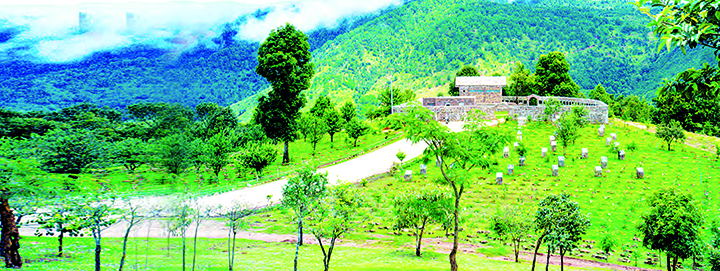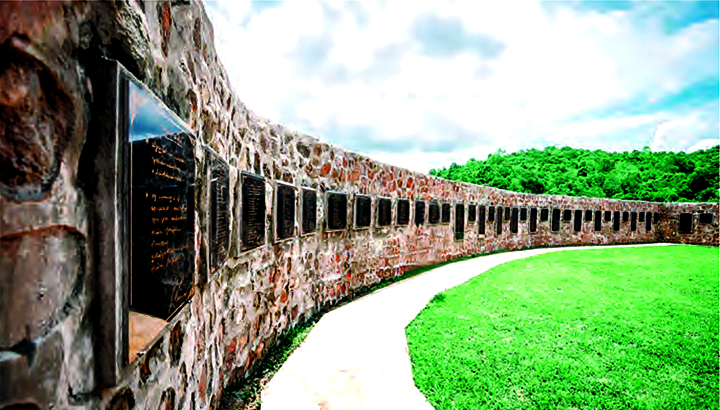22 July
When I was in Shan State (East) Kengtung town, locals directed me to visit Poem Graveyard. Even without knowing exactly what it was, the name attracted me and I hastily made arrangements to visit it. Once there, I found that it was quite a pleasant place where I felt longing for something or someone without being able to specify exactly what or who. I wrote about this place briefly in my travelogue to Kengtung and now I’ll write more in detail about it.
How to reach it
From Kengtung along the Kengtung-Tachilek Road an hour by motorcycle or 45 minutes by car would bring you to Pan Kwe Village, a rest area with shops and stalls for cars, buses and trucks. Among the shops and stalls, you’ll see an entrance gate to Abaya Raza Muni Buddha image. After passing through the entrance gate, a small road going uphill will take you to the Buddha image. The uphill road was rather steep but the views along the way were pleasant with farm land, plantations and natural sceneries making the walk up the path less tiring.

Paying homage to Buddha image before going on to Poem Graveyard
Before reaching the Poem Graveyard, I first arrived at the Buddha image. As the Buddha image was on top of a small hill, it looks more imposingly higher than it actually was. There were two doors or rather an entry and exit at the side of the Buddha image allowing devotees and visitors to enter the interior of the Buddha image just like the Daibutsu (Great Buddha) in the city of Kamakura in Kanagawa Prefecture, Japan. I don’t know what was inside the Daibutsu but the interior of this Buddha image had the life story of Gautama Buddha sculptured on marble slabs.
From there, continuing along the tree shaded mountain path will take you to the Poem Graveyard.
Poem Graveyard
The place was called Garden of Buddha and was also known as Poem Graveyard. Both names seem to be a bit contradictory or unrelated but were enough of an attraction for anyone like me who first heard it. The place was said to be constructed by devotees of a well known Sayadaw according to an imaginary vision of the Sayadaw. Looking down at the “garden” or “graveyard” as I approach it, the enclosed building and small structures inside the compound seems like an ideal place to meditate. The compound surrounded by a rock wall had roses planted outside. The walled compound can be entered through a small archway gate. All along the inside wall and on the small tomb-like ledges hung or stuck were poems. The fact that the poems were hung or stuck on the small tomb-like ledges may be the reason why the place was called Poem Graveyard. But my mind came up with a name like “Garden where poems bloom” that I thought would be more appropriate. The poems were of diverse subjects covering religion, philosophy, patriotism, life etc. Poems were written in Myanmar and Shan languages. It was a serene peaceful place with natural surrounding that was outstandingly beautiful. It was one of my most favorite places in and near Kengtung.
Returning from Poem Graveyard
The road back to Kengtung took me through the same scenic places as well as Panlot Village where local rice wine or liquor was being fermented and distilled. Upon passing through it on the way to Garden of Buddha or Poem Graveyard, I knew from the smell that rice wine or liquor was being fermented and distilled there. So, on the way back to Kengtung I stopped by to taste it and ended up buying some. Many visitors were also said to like this rice wine or liquor and bought it on their way back home.
Whenever you are in Kengtung, give some time to visit this curiously named Garden of Buddha or Poem Graveyard.
Translated by Handytips
By Thiha (Traveller)



